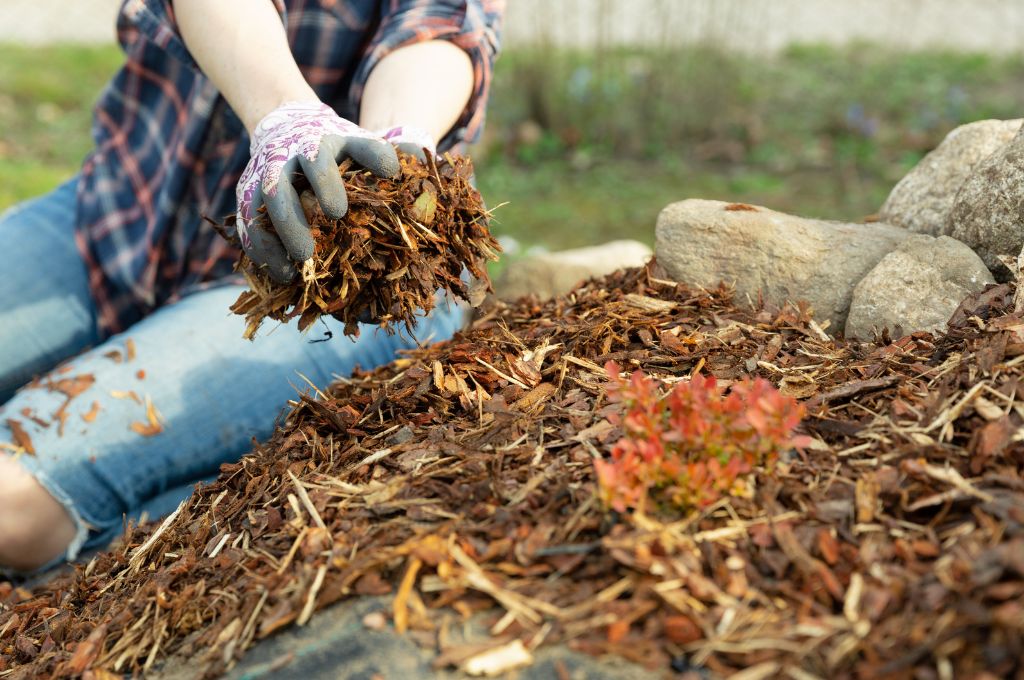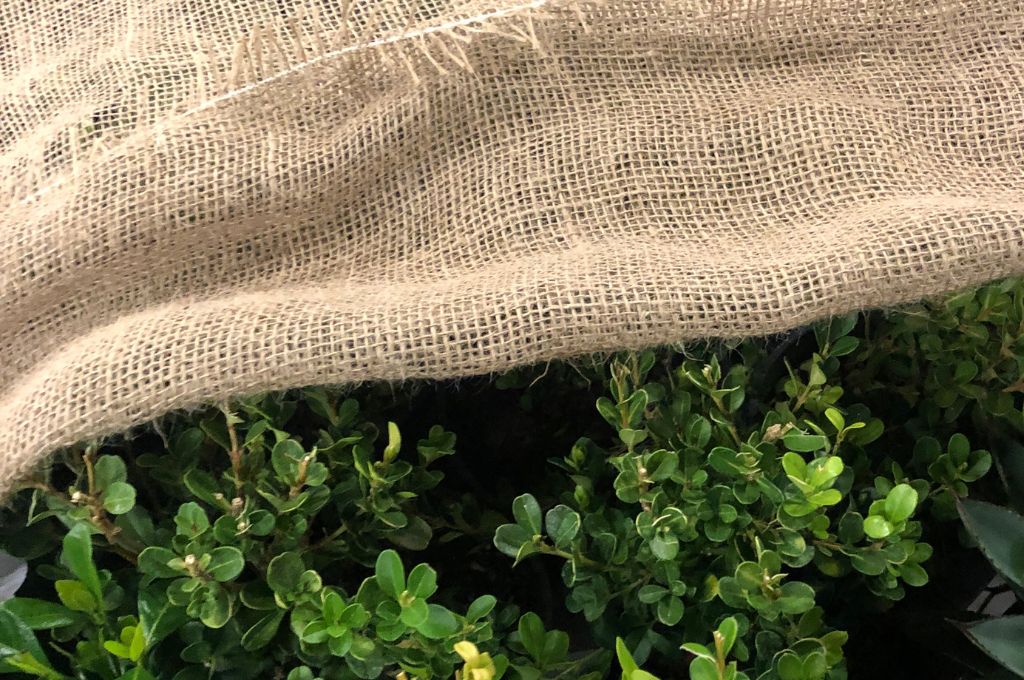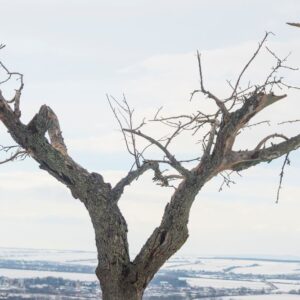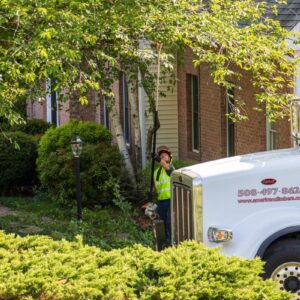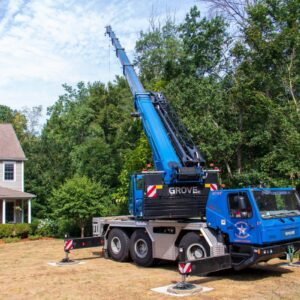Fall in Massachusetts is a beautiful time of year, with cooler temperatures, changing fall leaves, and a break from summer storms.
It’s also a great time of year to walk your property and take note of any issues that may need to be taken care of, and a time to do some fall clean-up and garden maintenance.
In this article, we’ll cover some fall clean-up tasks you may want to complete between September and December, including:
- Planting new trees (fall is an excellent time to plant in Hopkinton and surrounding areas)
- Pruning (most) existing trees and shrubs,
- Cleaning up fall debris,
- Determining if you want to leave some leaves on the ground (really!),
- Adding organic mulch, and
- Preparing your yard for colder temperatures
Plant New Trees This Fall
While you may think of spring as the time to plant, trees (and most shrubs) tend to fare better when planted during the fall months. This is because it gives the roots time to grow underground before energy is needed to produce new growth in the spring. Just be sure to plant before the ground freezes!
For more tree planting tips, check out our article on how to plant a tree the right way.
Schedule Fall Tree Pruning
Many property owners think that they need to wait until the leaves have fallen before scheduling fall pruning, but that is not the case. American Climbers can prune trees whether they have leaves or not.
Fall is a good time to prune out any storm damaged sections of trees or any unstable limbs that may not survive a heavy snowfall. It’s also a good time to prune to improve access to areas such as driveways or walkways or to remove branches that may be touching a roof or structure.
Keep in mind that some fall pruning can stimulate new growth. New growth may have a difficult time once temperatures drop. Contact us for a tree assessment if you’re not sure if your pruning job is best done in fall or if it is best to wait until winter.
Learn more about when to prune your trees and shrubs
See some benefits of winter tree work
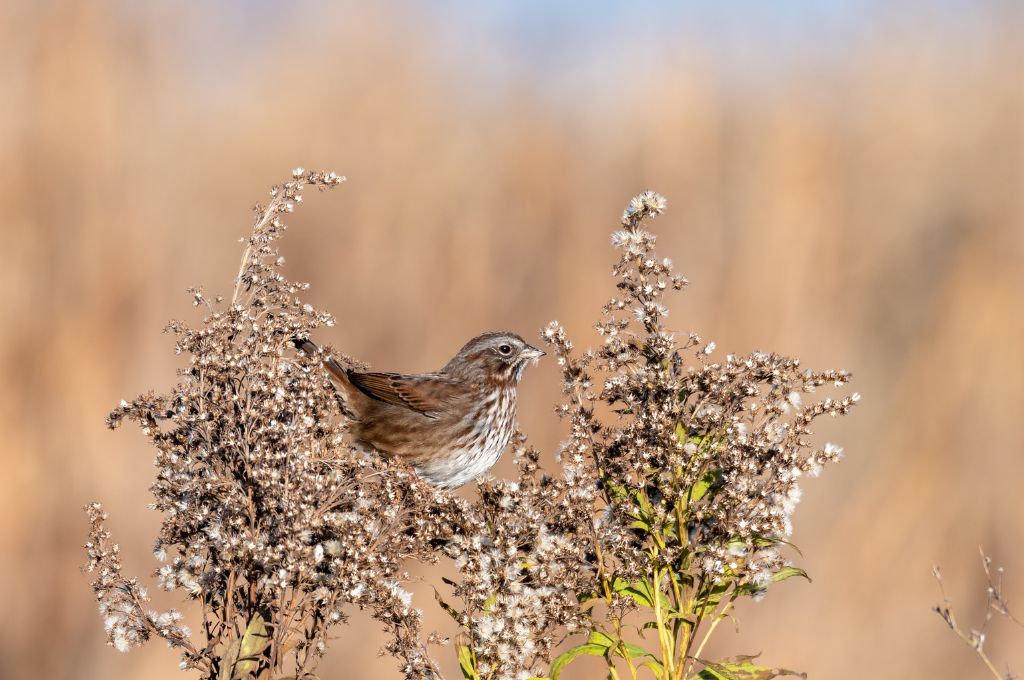
Keeping seed heads on some plants provides food sources for birds and other wildlife in Massachusetts.
Clean Up Fall Debris
Fall clean-up is an important task that helps your property and your trees remain pest-and-disease-free. It also means that you’ll have less need for pesticide and fungicide use (that’s good for plants, pollinators, and your wallet). Reasons for fall clean-up include:
- Removing leaves and debris that might harbor insect pests and fungal spores over the winter
- Keeping planting areas clear for top-dressing with compost and replenishing mulch
- Adding new material to your leaf-mold pile or compost pile, if you have them
- Maintaining clear access to trees that require dormant spraying
When you’re pruning, weeding, and cleaning up, be sure to leave any seed heads and berries that will provide winter food for birds and wildlife. You can prune any berry-producing trees after the fruit has been eaten and cut off seed heads after their seeds are gone.
Planting trees and creating a garden that requires fewer chemical treatments and attracts beneficial insects and pollinators (especially the threatened monarch butterfly) is one of the most important contributions you can make to a healthy community. Plus, you’ll get flowers, fruit, vegetables, and cooling summer shade trees in return.
Consider Leaving Leaves Alone
If your neighborhood allows it, you may want to consider the more natural approach of leaving fallen leaves on the ground.
Just be sure to run over them with a lawnmower to cut the leaves into smaller pieces, otherwise it will result in impenetrable mats of leaves that can kill your lawn and suffocate plants. The chopped-up leaves, however, will break down over time and provide nutrients to your soil and lawn.
The key here is to first make sure that none of your trees or shrubs are infested with any kind of pest or disease. You don’t want to make the situation worse by providing harmful insects, fungi, or bacterial with a safe, warm spot to spend the winter.
If you want to take advantage of the nutrients from the leaves without the messiness of leaves all over your lawn, you can gather them up and use them as part of a compost pile. You can also shred them to use as a natural mulch in your planting beds or garden.
Add a layer of mulch
Keep your tree roots cozy over the winter by adding a layer of organic mulch around the base of the tree, being careful to keep the mulch away from the tree’s trunk.
During the summer months, mulch helps keep the soil cool and slows the evaporation of water. In winter, mulch tempers the cold that can kill a tree’s delicate feeder roots and prevents extreme temperature swings.
We recommend using organic mulch, meaning mulch made from organic matter such as wood chips. Apply it in a layer no more than 3 inches thick to provide insulation from winter cold and, if the winter is dry, to keep soil moist and protected from drying winds.
See the Why, When, and How to Mulch Trees in Massachusetts
Remember, organic mulch will naturally break down, so it will need to be regularly replenished.
Water Your Trees Before the Ground Freezes
Depending on how much rainfall you’ve received lately, your trees may need a long, deep drink of water before winter arrives. Young trees, in particular, have small root systems and will need irrigation to expand their roots into the soil. If you’ve planted any trees or shrubs in the last two years, give them an extra drink this fall.
Watering long and deep is key. Set a garden hose to a slow trickle for several hours (placed at the drip line of the tree, not the trunk) to ensure water gets down to the tree’s root zone without running off.
Older, established trees may need water before the colder months too, especially if the weather has been drier than normal.
Prepare for Colder Temperatures
While adding organic mulch will do a lot to regulate the temperature of the soil around your trees and plants, if you have particularly sensitive or non-native plants, you may need to do more to protect them.
Young trees and some broadleaf evergreens can benefit from being wrapped in burlap, especially if they may be exposed to road spray salt.
Wrapping can also prevent deer from eating your shrubs, plants, and trees. Even the best deer repellents won’t keep hungry deer away in winter, but burlap wrapping will.
Fall Clean-up Checklist
If you complete the tasks listed above, your yard should be well-equipped for the upcoming winter. Don’t forget to contact us for any tree pruning or removal needs this fall.
Other than that, the simple fall clean-up and tree care tasks described in this article will help your trees and yard stay healthy throughout the year, providing a place for you to enjoy the outdoors and our beautiful area in every season.
Blog Topics
Recent Posts
What's Happening? Stay Informed!
Stay on top of local events, pest and disease updates, tree and landscape tips, and more. Delivered straight to your inbox each month.



